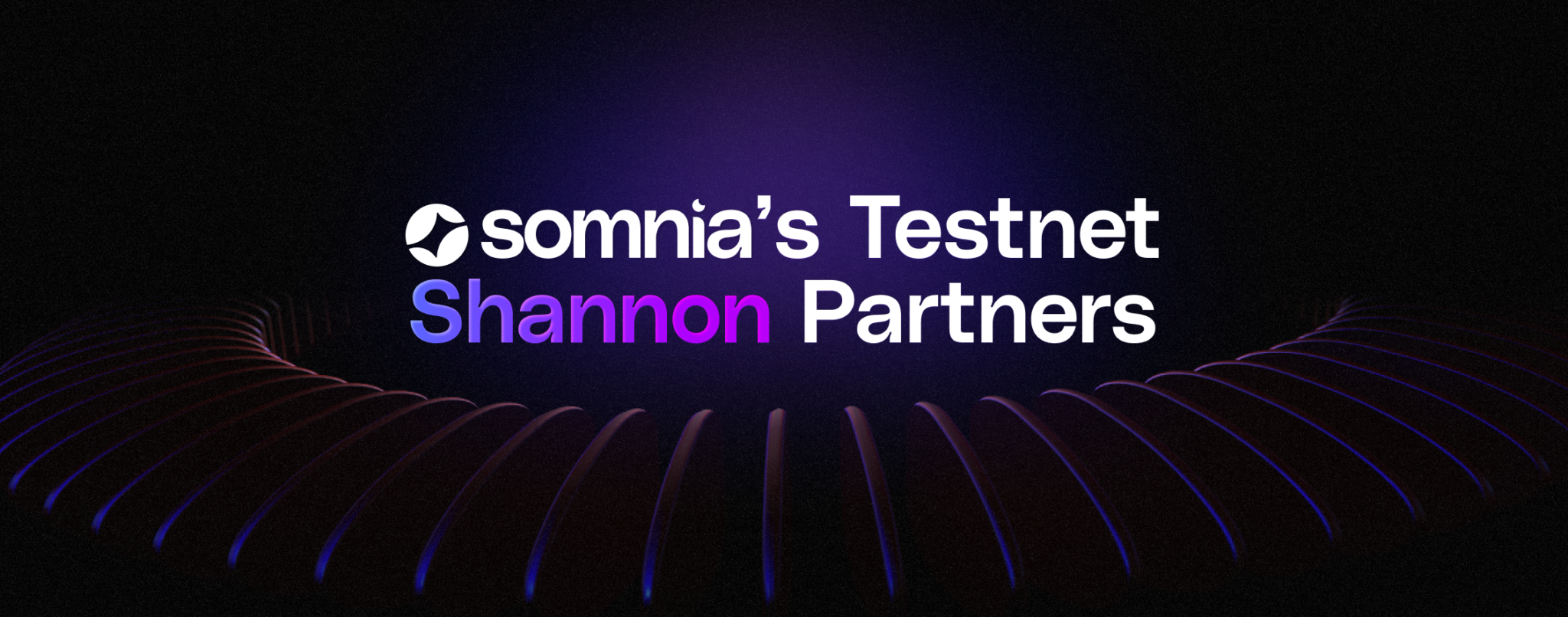
The Case for On-Chain Gaming: Exploring Autonomous Worlds

The Evolution of Gaming: From Pixels to Blockchains
Gaming has always been dynamic, evolving through technological advancements, business model shifts, and platform transitions. From arcade machines to mobile devices, the industry has continually adapted, introducing new genres, gameplay mechanics, and monetisation strategies. Each era, often driven by innovative newcomers, has expanded player access and transformed how we interact with virtual worlds.
The Unfulfilled Promise of On-Chain Gaming
Blockchain was hailed as a potential platform that enabled business model shifts. Despite the initial excitement and substantial investments in blockchain gaming, the sector has yet to deliver on its lofty promises. The current value prop of on-chain gaming centred around digital asset ownership and interoperability, has yet to gain significant traction beyond crypto-enthusiast circles.
Most blockchain games today only incorporate limited on-chain elements, typically NFTs or cryptocurrencies. While these games allow players to truly own their in-game items as non-fungible tokens (NFTs), they often fall short in using the full potential of blockchain technology. The gameplay usually remains off-chain, relying on traditional centralised servers and databases.
The concept of interoperability – the ability to use assets across multiple games and platforms – has proven challenging to implement meaningfully. In reality, this feature doesn’t make sense for 90% of games due to differing game designs, technical incompatibilities, and lack of standardisation.
Play-to-Earn (P2E) models emerged as a new business model, allowing a new class of players to participate and earn in games. However, participants often exploit these mechanics to extract maximum value, making them economically unsustainable in the long run. While there may be potential for viable P2E models that scale with player numbers (i.e. through advertising revenue), current implementations have largely fallen short.
The Untapped Potential of Fully On-Chain Games
Despite these challenges, fully on-chain games offer intriguing possibilities yet to be fully explored. In a fully on-chain game, all game logic, state, and assets exist entirely on the blockchain, creating a unique set of characteristics:
- Permanence and Censorship Resistance: On-chain games can exist indefinitely, independent of any central authority or server.
- True Ownership and Verifiable Scarcity: Players have undeniable ownership of their in-game assets and achievements, secured by blockchains.
- Permissionless Extensibility: Games data and code live on-chain, enabling anyone to build upon or modify them without requiring permission from the original creators. The Loot Project, launched in 2021, demonstrated this concept by providing a set of randomized adventure gear as NFTs, which spawned hundreds of community-created games, tools, and additional lore built around these basic items.
- Transparent and Immutable Game Logic: All rules and mechanics of the game are publicly visible and cannot be altered arbitrarily.
- Value-Sharing Mechanisms: On-chain games can implement systems where value is shared among all participants, including mod creators and derivative game developers.
This sounds good in theory, but does it create more fun games for players? We explore different ways these elements can be applied to make new games.
The Power of Mods and Community-Driven Development
One of the most promising aspects of on-chain gaming is its potential to revolutionise modding and community-driven development. Mods have long been a crucial part of gaming culture, with several genre-defining games (e.g., DoTA, LoL, PUBG) having roots in modded versions of other games. Platforms like Roblox and Unreal Engine’s UEFN have shown the power of user-generated content in creating varied and novel experiences.
On-chain games could take this concept further by enabling:
- Composable Mods: Unlike traditional modding, where mods often can’t build upon each other, on-chain games could allow for mods on top of mods, creating rich, layered experiences.
- Economic Incentives for Modders: Successful mods tend to become standalone games. This is due to value accruing to the game dev rather than the mod creator. Through value-sharing mechanisms, mod creators could be directly rewarded for their contributions to a games ecosystem. Similarly a game creator could be rewarded by value created by a modder creating a more cooperative ecosystem.
- Persistent and Evolving Game Worlds: Mods and community-driven changes could become part of the core game experience, allowing for truly player-shaped worlds. These worlds could have online economies at their heart.
True Online Economies: The EVE Online Example
While mods showcase the potential for community-driven content creation, true online economies demonstrate the power of player-driven markets and social structures within game worlds. EVE Online is a prime example of a complex, player-driven economy in traditional gaming.
EVE Online, launched in 2003, is a space-based MMO renowned for its intricate economic system. The game’s economy is almost entirely player-driven, with minimal intervention from the developers, CCP Games. Players mine resources, manufacture goods, trade commodities, and even engage in corporate espionage and large-scale warfare, all of which have real economic consequences within the game world.
Key aspects of EVE’s economy include:
- Player-Driven Markets: Players create and trade almost every item in the game, with prices determined by supply and demand.
- Complex Production Chains: Players must collaborate to produce advanced items, creating interdependencies and specialisations.
- Risk and Reward: The game’s dangerous space regions offer valuable resources but at high risk, driving conflict and cooperation.
- Emergent Gameplay: Players have created roles and professions not explicitly designed by developers, such as bankers, mercenaries, and diplomats.
However, despite its depth, EVE’s economy still has limitations:
- Centralised Control: CCP Games still creates and maintains the underlying ruleset. While players have significant freedom within the game, they cannot fundamentally alter its core mechanics.
- Limited Asset Portability: Players can’t easily transfer the value of their time and effort in EVE to other games or the real world. The assets and wealth accumulated are confined to EVE’s ecosystem.
- Developer Incentives: CCP Games, like other traditional game developers, is not incentivised to allow players to fully extract value from the game, as this could reduce player retention and ongoing revenue.
These limitations highlight areas where blockchain technology could innovate, allowing for community governance, actual asset ownership, transparent economics, and better incentivisation between developers and players. Because of this players can also have more participation in how a game evolves over time.
Player-Driven Game Evolution
On-chain games have the potential to introduce novel mechanisms for player choice and game evolution that go beyond what’s possible in web2 gaming. Three fundamental approaches showcase this potential:
1. Seasonality and Iterative Experimentation
Many traditional games, particularly MMOs like World of Warcraft, deploy major upgrades from months to years. Seasonality could be a powerful tool for iterative experimentation in on-chain games, introducing changes to core mechanics, economy, or rulesets.
However, this approach can disincentivise players from building complex mods or deeply investing in the current meta, as their work could become obsolete in future seasons. With on-chain games this could resort in many forks of a game being created. As long as value still flows to originators, this is ultimately better for players as it gives them more choice in how they want to play the game.
2. Automated Feedback and Anti-Stagnation Mechanisms
On-chain games could implement automated feedback systems to prevent stagnation and maintain game balance. These mechanisms, built directly into smart contracts, could automatically adjust parameters based on player behaviour and economic metrics. Examples include dynamic resource spawn rates, adaptive enemy difficulty, and self-regulating in-game marketplaces.
While not unique to on-chain games, blockchain technology offers advantages in transparency and trust, potentially driving innovations in efficient, algorithmic game balancing.
3. Novel Governance Mechanisms
On-chain games open up new possibilities for player governance beyond traditional voting systems. Potential approaches include meritocratic systems tied to in-game achievements, dynamic rulesets where rule creation is part of gameplay, and faction-based governance systems.
An early example is Topology’s game Isaac, which integrated a bespoke governance system into core gameplay. This system allows players’ actions and achievements to influence the game’s future development directly.
These novel governance mechanisms could allow players to have a more direct and meaningful impact on the game’s evolution, creating a sense of ownership and community. However, designing these systems to be engaging and resistant to manipulation presents a significant challenge.
Onchain Games Surpassing web2 Games
The picture above sums up the current view of onchain games. This we believe is due to there being only a surface level understanding of how they can provide value (ownership and interop). The combination of community-driven development, true online economies, and enhanced player choice mechanisms presents a compelling case for on-chain games to innovate and surpass web2 games in terms of player engagement and satisfaction. This potential stems from three key elements:
- Mod-based Gaming Economy: On-chain games could drive a thriving ecosystem where modders are directly rewarded for their contributions. Unlike traditional games, where modding is often a labour of love, blockchain technology enables value-sharing mechanisms that could turn modding into a viable economic activity. This could lead to innovative content and game experiences, continuously refreshing the game world and keeping players engaged.
- Economy-driven Games with Real-world Value: Building on the example of EVE Online’s complex economy, on-chain games could create even more intricate economic systems where players’ actions have real economic consequences. The difference is that blockchain technology allows for “offboarding” – transferring in-game assets or wealth to other games or even converting them to real-world value. This adds a new layer of significance to players’ in-game activities and achievements.
- Enhanced Player Choice and Influence: Through seasonality, automated feedback systems, and novel governance mechanisms, on-chain games could offer players unprecedented agency in shaping the game world. Players could have a say in everything from balance changes to introducing new features, creating a truly player-centric gaming experience.
These factors contribute to two key elements that drive player satisfaction:
- Novel Experiences: The constant influx of community-created content, evolving economies, and player-driven changes to the game world ensure that the game remains fresh and exciting over long periods.
- Agency: Players have more control over their gaming experience, from the ability to create and monetise content to having a voice in the game’s development direction.
However, while this potential exists, significant challenges must be overcome before on-chain games can fully realise these benefits. The current ecosystem has several barriers that make implementing these features difficult.
Challenges and Gaps in the Current Market
Despite the potential, several significant challenges need to be addressed for on-chain gaming to reach its full potential:
- Scalability Issues: Most existing blockchains struggle to handle the transaction volume required for large-scale, multiplayer games. This limitation leads to high gas fees and slow transaction times.
- Poor User Experience: The complexities of blockchain interactions, including the need to set up crypto wallets, purchase tokens, and approve transactions, create a steep learning curve for new users. Additionally, the current state of on-chain gaming often falls short of the smooth, intuitive experiences offered by traditional games. This disparity in user experience contributes to low retention rates and limits the appeal of on-chain games to a broader audience.
- Lack of Partial Information: On-chain games pose a unique challenge. Many game types, particularly strategy games, rely on mechanics like “fog of war” or hidden information. However, the inherently transparent nature of blockchain technology makes it difficult to conceal information from players. Some projects, like Dark Forest, have experimented with zero-knowledge proofs to address this issue, but these solutions are often computationally expensive and complex to implement at scale. Dark Forest, is a space-conquest game, uses zk-SNARKs to keep players’ actions and locations hidden while still verifying their validity on-chain, effectively implementing a ‘fog of war’ mechanic.
- Economic Sustainability: Creating sustainable economic models for on-chain games remains a significant hurdle. Many current blockchain games rely heavily on continuous player influx to maintain their economies, leading to unsustainable “bubble” dynamics. Balancing in-game economics with engaging gameplay is a delicate task, further complicated by the volatility of cryptocurrency markets.
- Development Challenges: Building fully on-chain games presents unique challenges that differ significantly from traditional game development. Building fully on-chain games requires new approaches to game design and development, with tools and best practices still in their infancy. Developers must learn new programming languages and paradigms, such as Solidity or Cairo, which often have limitations compared to traditional game development languages. Projects such as Lattice’s MUD engine and Dojo on Starknet are working to address these issues but still require developers to create logic in blockchain languages.
- Lack of Engaging Gameplay: Perhaps most critically, many blockchain games currently lack engaging gameplay. There’s a tendency in the space to prioritize tokenomics and economic mechanisms over creating fun, compelling experiences. This focus on financial aspects often results in games that fail to keep players engaged long-term. Axie Infinity, for instance, initially gained massive popularity with its play-to-earn model but struggled to maintain player engagement once the economic incentives became unsustainable.
The Path Forward: Solutions and Innovations
To bridge the gap between the promise and reality of on-chain gaming, several areas of innovation are crucial:
- Improved Infrastructure and Scalability: The industry today is focused on layers 2’s and gaming specific chains to solve the cost and performance issues of on-chain games. Projects like Nine Chronicles, a fully on-chain RPG running on its own blockchain, and Redstone, an Optimism fork with performance enhancement for high-throughput, are pushing the boundaries of what’s possible with on-chain gaming infrastructure. This is great, but to fully support on-chain games we need solutions capable of handling hundreds of thousands of transactions per second.
- Better Tooling and Standards: Creation of specialised game development frameworks, SDKs, and standards to simplify building on-chain games. Specifically these need to be built into game engines to meet developers where they are comfortable. As opposed to trying to get them to adopt a new paradigm and language to contend with.
- Enhanced User Experience: Development of wallet solutions and interfaces that hide the complexity of blockchain interactions from end-users.
- Novel Governance Mechanisms: Exploration of new ways for players to influence game development and rules, potentially as part of core game loops.
- Sustainable Economic Models: Design of in-game economies that balance player rewards with long-term sustainability, possibly leveraging new revenue models like advertising.
- Privacy Solutions: Implement zero-knowledge proofs and other cryptographic techniques to enable partial information in fully on-chain environments.
The Future of On-Chain Gaming
While on-chain gaming has yet to live up to its initial hype, the potential for innovation in this space remains. The true power of blockchain in gaming may not lie in asset ownership or interoperability but in creating new ecosystems of value creation and sharing among developers, modders, and players.
The success of on-chain gaming will ultimately depend on its ability to offer experiences that are not just novel but genuinely better than their traditional counterparts. This might come from player-driven economies with real stakes, truly persistent and evolving game worlds, or more community ownership and development. These experiences aren’t available yet because no existing blockchain can handle the level of throughput needed. This is exactly why Somnia is designing an EVM L1 that is optimized for these types of high-traffic on-chain applications. In early MVPs we have achieved 400k TPS running over 100 nodes distributed globally, far exceeding the throughput needed for on-chain gaming.
It’s clear that on-chain gaming’s journey is just beginning. The next few years will determine whether it becomes a transformative force in the industry or a niche curiosity. Either way, the experiments and innovations emerging from this space will undoubtedly influence the future of gaming, potentially creating new models of collaboration and value creation that extend far beyond the gaming industry.
Stay updated with Somnia
Twitter – Discord – Telegram – Reddit – Lightpaper – OnePager



